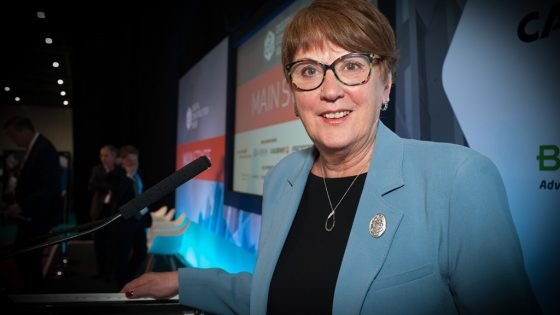Industry leaders have warned that the “golden thread” of building safety information mandated after the Grenfell tragedy may be hampered by a profusion of digital systems.
At a debate on standardized product data and building safety, chaired by Dame Judith Hackitt (pictured) during Digital Construction Week, concerns were raised that progress on the issue was being undermined by the lack of of digital standardization.
Hackitt’s report into the 2017 fire at Grenfell Tower, in which 72 people died, identified the need for a golden thread of information for higher-risk residential buildings to ensure safety data is collect, store and maintain throughout the life cycle of the building.
Hackitt asked a group of industry experts whether there was a risk of “everyone doing their own thing” as a result of the emergence of multiple digital systems, leading to greater confusion and a loss of benefits from the standardization.
“I don’t think there’s any risk; I think it’s happening now, if I’m perfectly honest,” said Frank Elkins, chief operating officer at builders’ merchant Travis Perkins.
“The reality is that we all face the same problems and […] there’s a real need for the industry to come together and work together on how we’re going to solve this problem.”
Nico van der Merwe, chief executive of Signify UK and Ireland (formerly Philips Lighting), warned against delaying action until, as with the 1980s battle between VHS and Betamax videotape formats, a “definite winner”.
“The worst thing you can do is not start,” he said. “You have to go, but go with entities and bodies you think you can trust. And that will be in the next five years because it’s a journey: it’s not a single handshake, it’s an ongoing partnership.”
Angus Macdonald, founder and chief executive of Galion, a small Somerset-based housebuilder, said his company had struggled to decide how to embrace digitalisation.
Galion chose to adopt the WholeHouse platform developed by Travis Perkins, which allows small and mid-sized homebuilders to design a custom digital model of a home before building it.
“In this case, we’ve put tremendous trust in Travis Perkins to come out and do all this work,” Macdonald said.
The digital-first approach meant that information could be standardized and shared with customers, bringing the golden thread closer, Macdonald said, as well as allowing Galion to build faster and reduce costs.
“We don’t know if we support VHS or Betamax, though […] we feel that we are on the right path”, he added.
“We sit here, on the food chain, so to speak, waiting for us to get the right horse.”
Stephen Jeffery, chief technical officer at Mace, said larger companies could play a role in helping SMEs meet clear common standards, but argued that the tools used to achieve those standards would vary.
“I don’t see a problem with people using different tools,” he said. “It doesn’t make sense to say that everyone uses the same tool, but I think the standards and procedures just need to be a little clearer.”
In response to a question from Hackitt about what would happen to those who opted for digitization or were late adopters, Elkins warned that they would be left behind.
“The drive for digitization is here: it should be adopted, it should be adopted,” he said, predicting that digitization would lead to an “exponential curve” in efficiency, sustainability and safety.
“My personal opinion is that those who don’t get on board don’t listen very carefully […] customers and will actually be left behind.”
The debate was organized by ETIM UK, a joint venture between the Federation of Builders’ Merchants and the Electrical Distributors Association.

